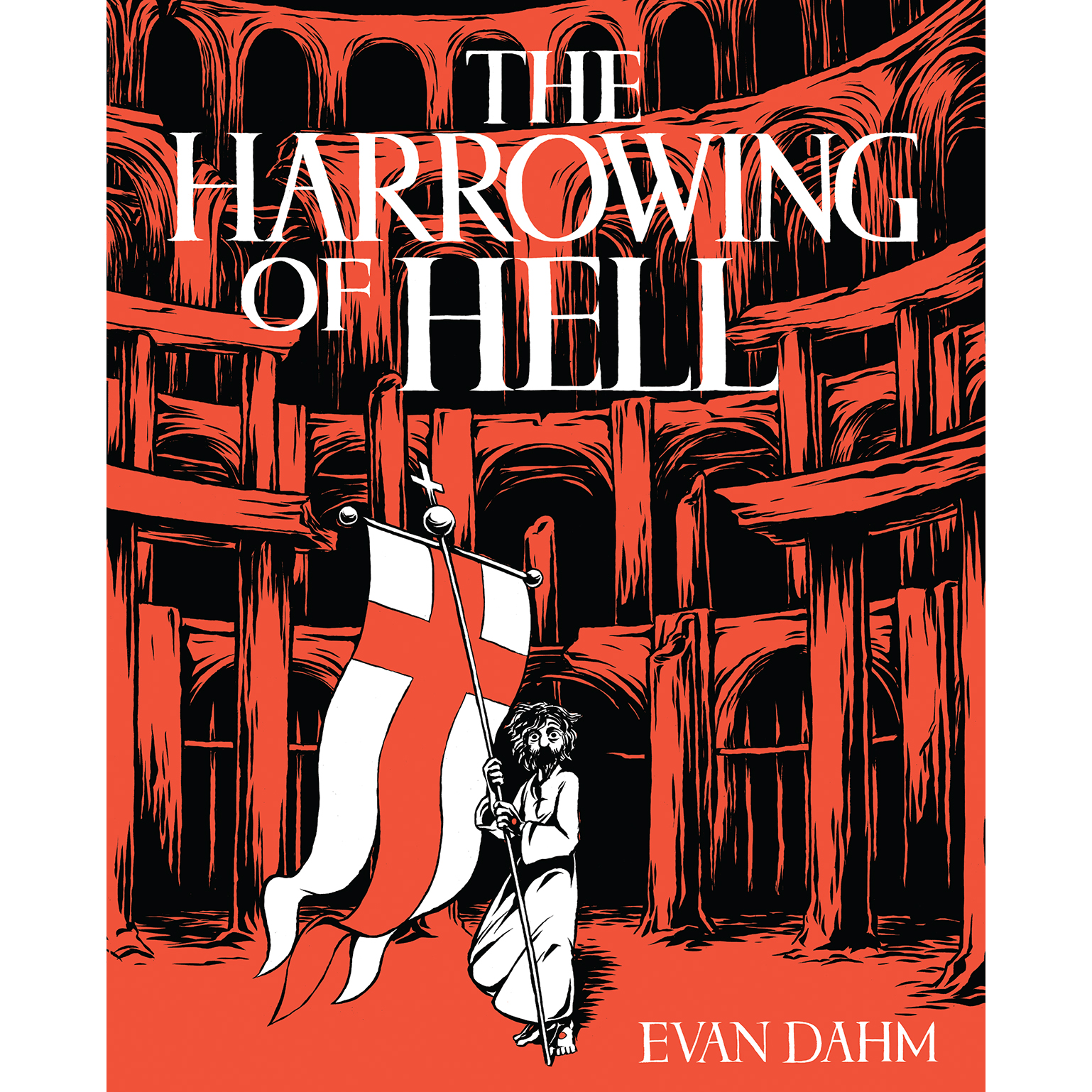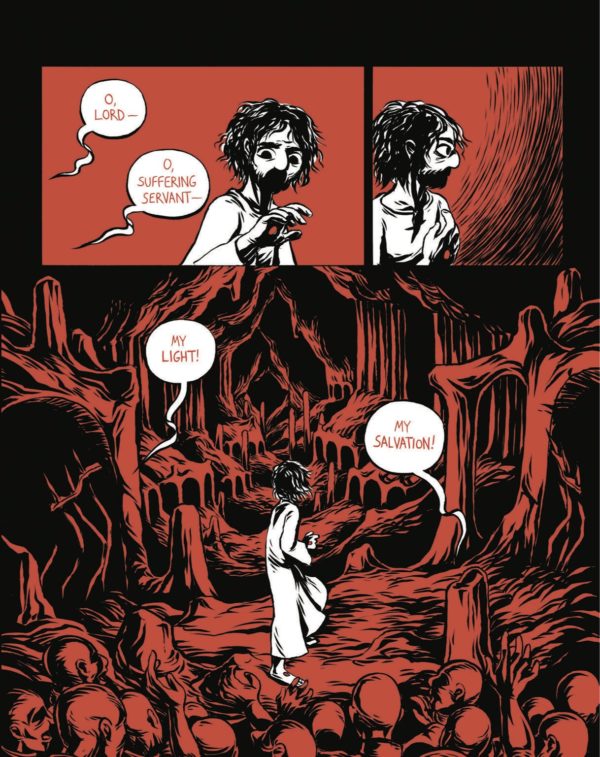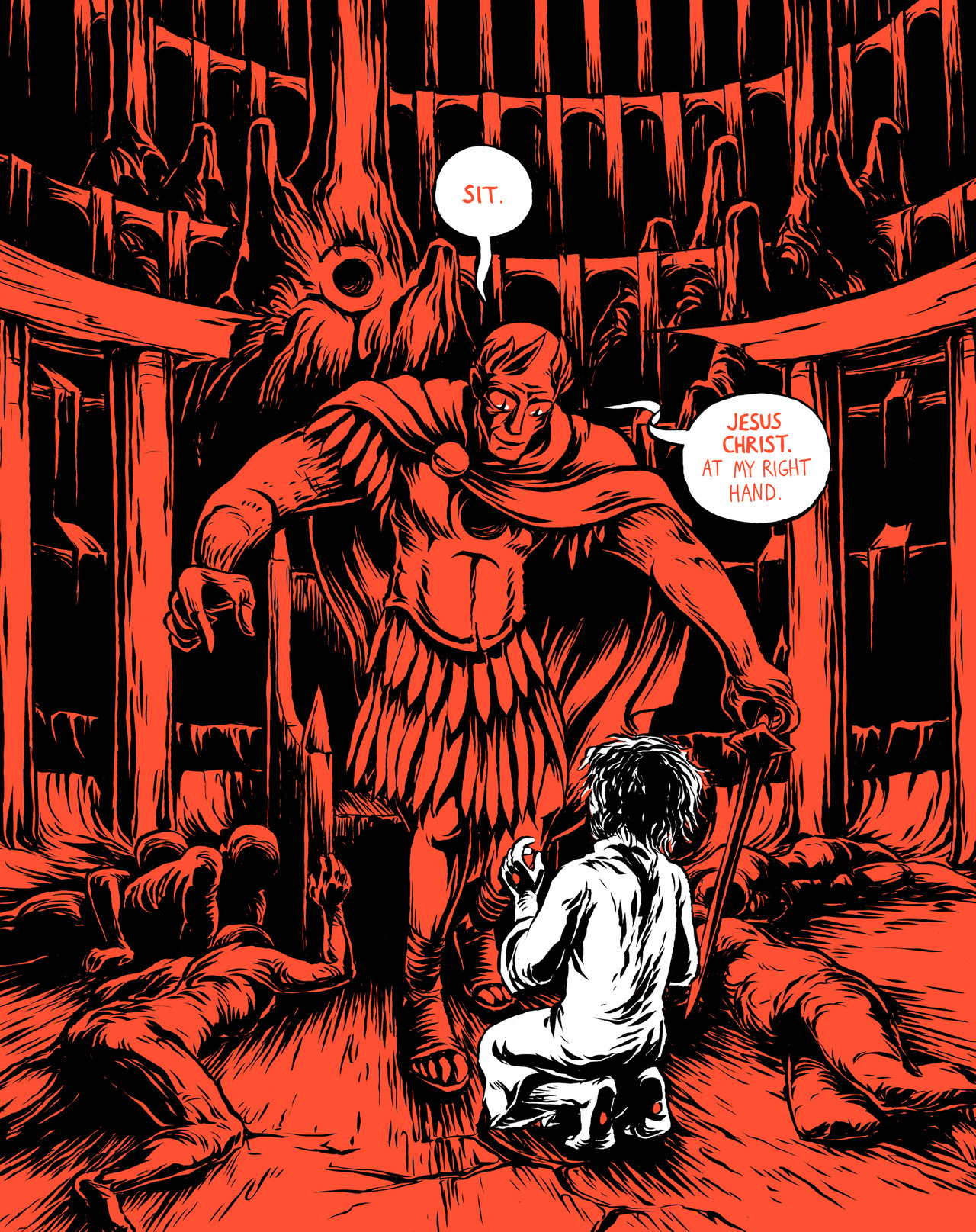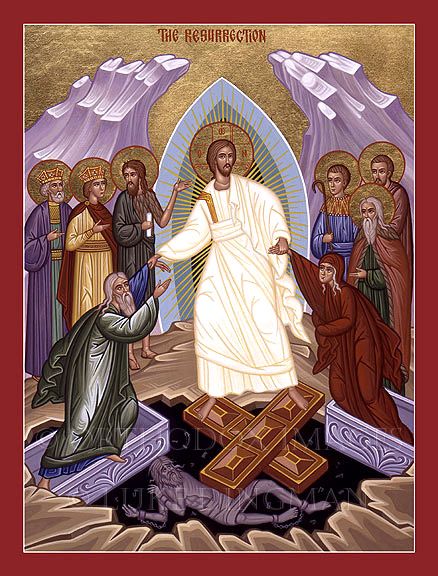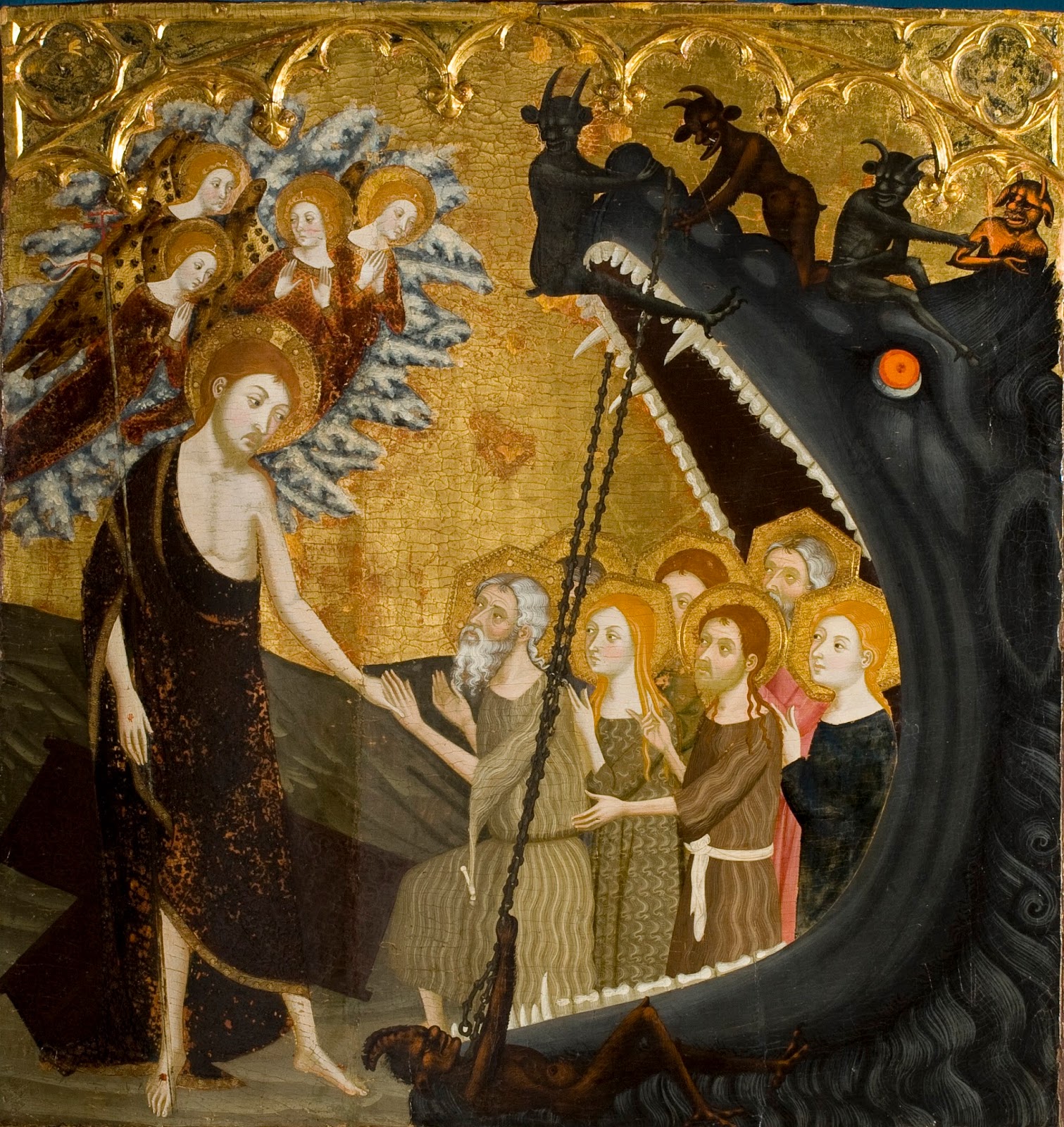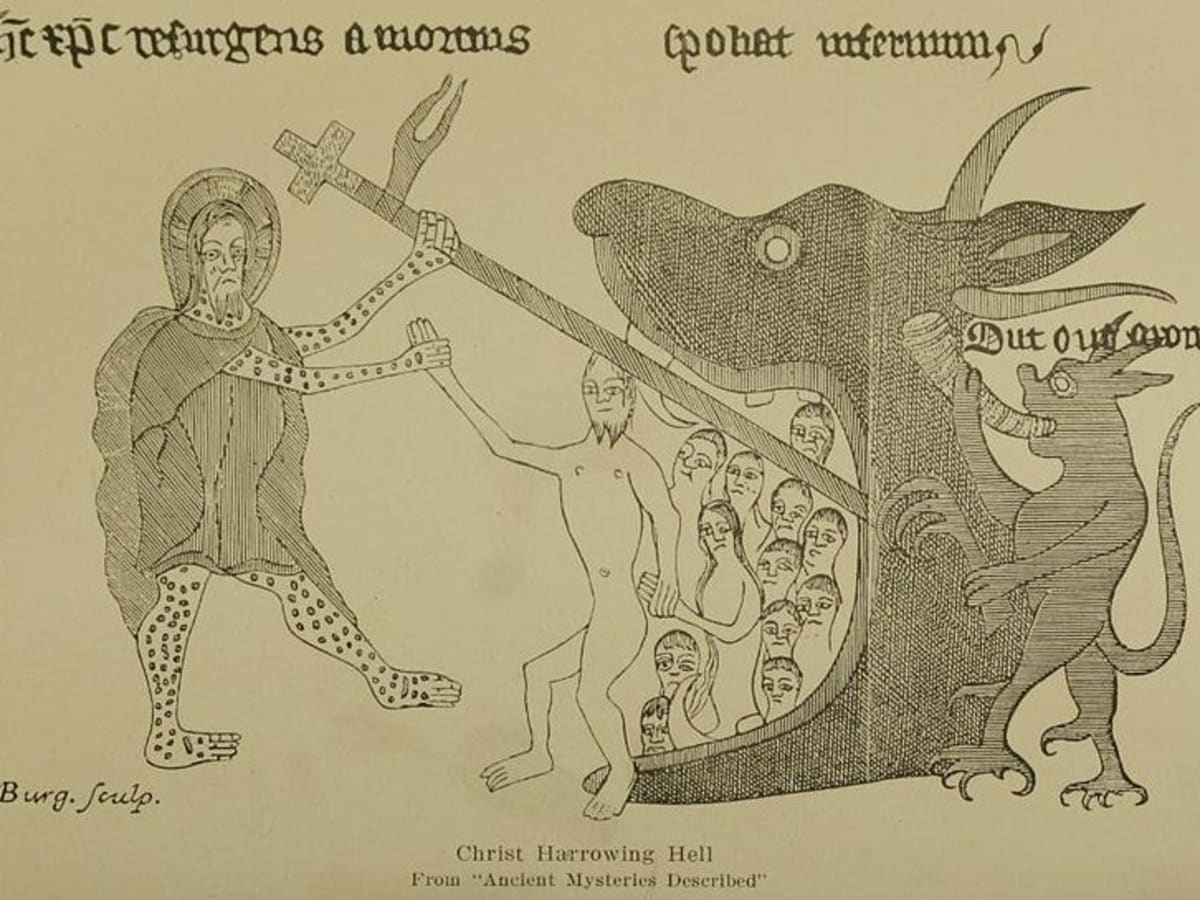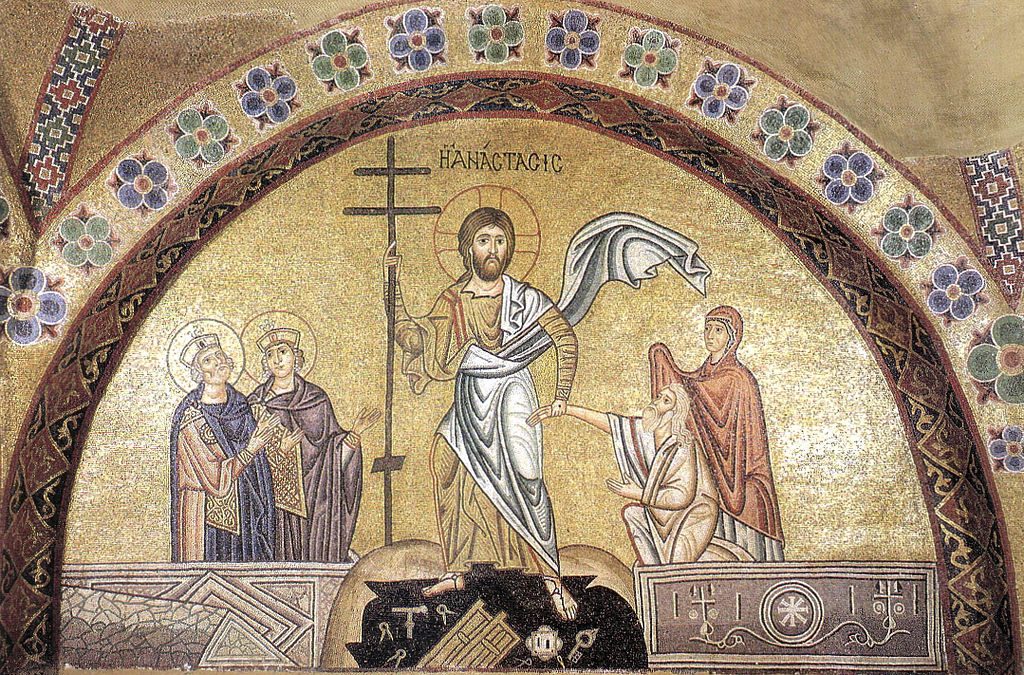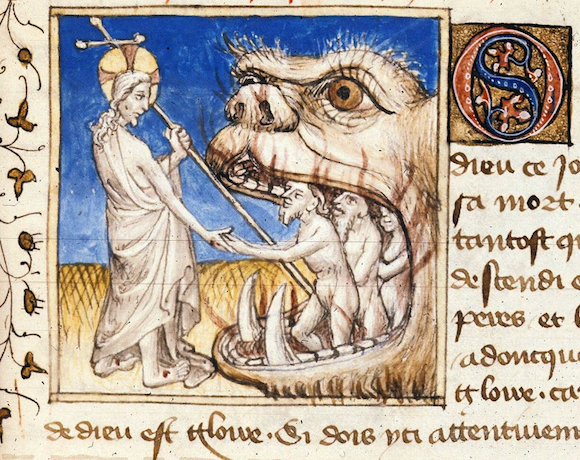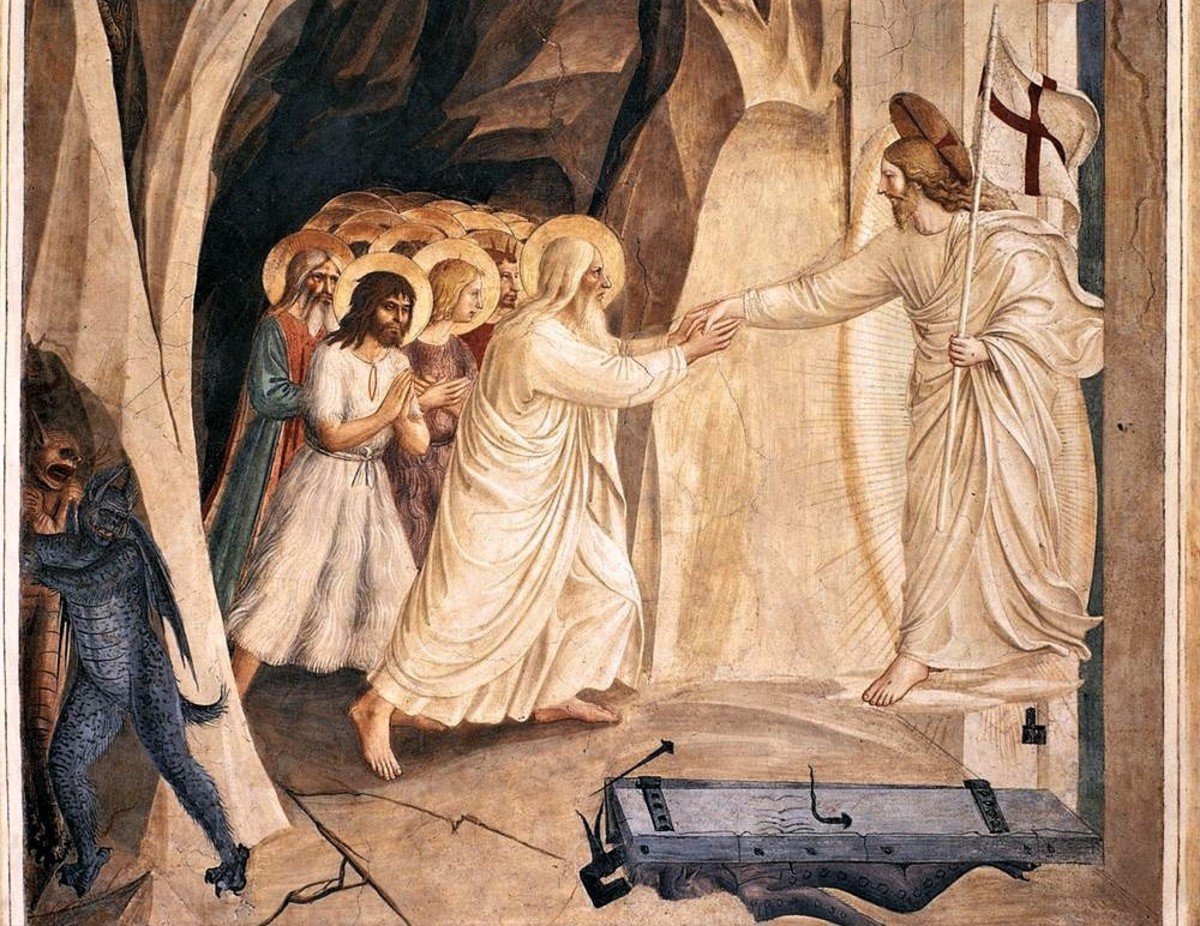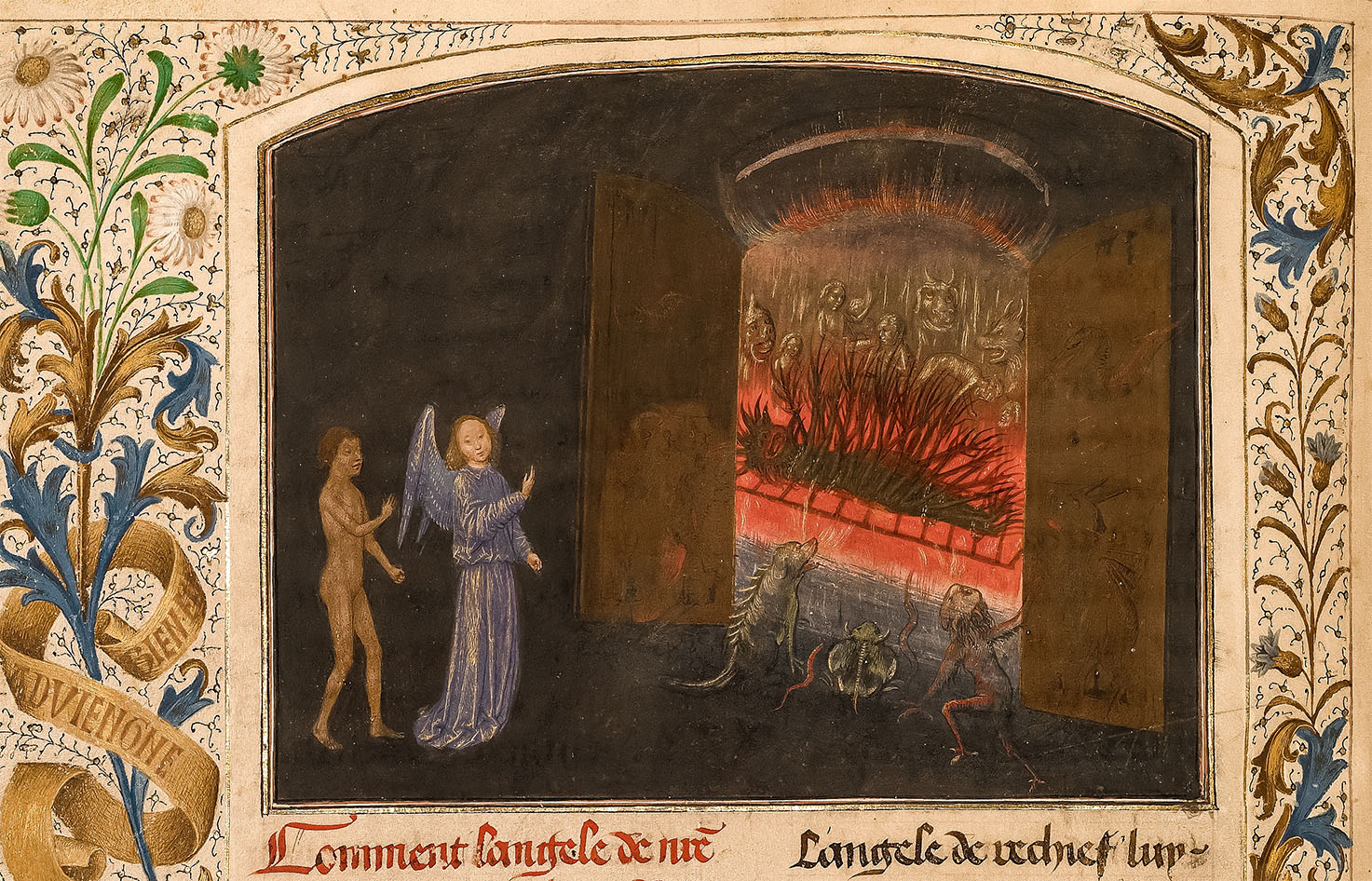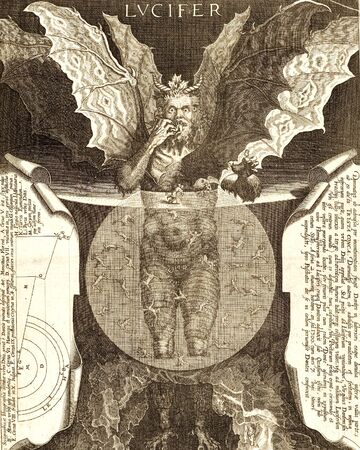Ep. 13 – Kicking Down Hell’s Door
Manage episode 409413894 series 2865672

Happy Easter! Though this one’s going out on Holy Saturday, and nobody says “Happy Holy Saturday. So that. In some traditions, this is the day where Jesus went to the underworld after he died, so we’re taking a deep dive into the descent to the land of the dead. But first some meandering. Because podcasts are such a vibrant visual medium, we’re going to begin with a photograph of a dog (it’s on topic) (kind of) and a graphic novel. The dog is reasonably self-explanatory (found art: pit bull mix, infernology text). The graphic novel is a very nice one, The Harrowing of Hell by Evan Dahm. This shows a very meek Jesus, no kind of warrior. It cuts back and forth between the realms of the living and the dead, and has no shortage of tragedy and temptation. A very good read. Victoria feels like the Lucifer/Hades figure looks like a Sleestack from Land of the Lost. You be the judge.
Very strong recommendation from Jacob for the Inferno: Dante’s Guide to Hell kickstarter. It’s running through April 9 so maybe you can get in the door! The first is a three-volume set (GM’s guide, player’s guide, art book) to help play Dante’s Inferno-type quests under D&D 5th edition rules. And it may be a series, expanding the story through the other two movements of the Divine Comedy (Purgatory, Paradise). Very neat!
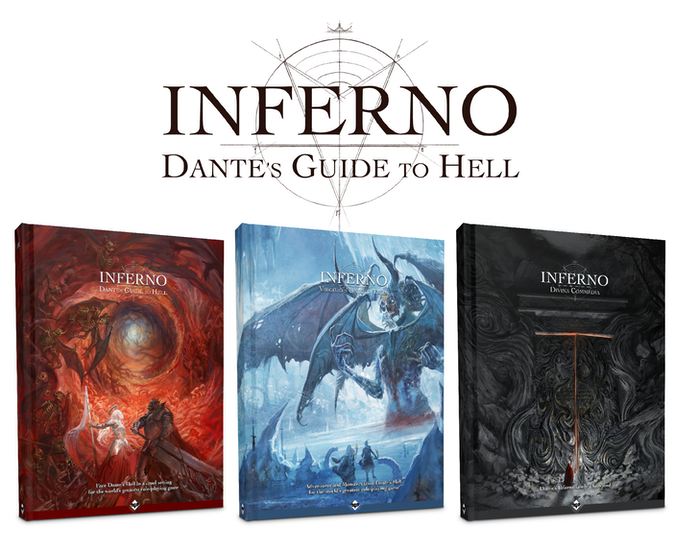
And then there’s Advocaat, an egg-yolk based liquor. Feel free to buy it from any number of sources. Or, if you’re daring, make your own glass of this “custardy classic. It’s eaten with a spoon. There aren’t that many scooping beverages out there.
The Harrowing of Hell
This narrative is a story loosely based on scripture, somewhat derived from Jewish millenial/apocalyptic texts and mostly based on medieval bible fanfic. The Harrowing of Hell the story of how Jesus descended into the land of the dead after his crucifixion, and plundered hell of its greatest treasures: the souls of the Jewish faithful who were waiting for the Messiah. Listening to us try to sort out this complex little plot may test anyone who isn’t on their third glass or bowl of Advocaat, so I’d encourage you to press pause and watch the York Players putting on the “Harrowing” as an urban mystery play. Taking it in as a play may get you a bit more in the mood to appreciate the weird.
The word “harrowing” has two sets of meanings, though both share a common ancestry. Possibly. Agriculturally it means to rake, to break open, to tear, and metaphorically to distress: breaking up the ground for planting. The other meaning (to ravage, to despoil, possibly to plunder) came from “to harry” in a sort of military sense. The two meanings seem kind of merged in the more modern definition of harrowing, “distressing or disturbing.”
The harrowing story became big in the medieval world, it was a great action sequence, and a lot of iconography picks up a “christ the crusader” flavor. Some other recurring parts of the harrowing imagery: the devils are shocked, scared, and abused (my favorite is Satan flattened by the door that got kicked in). Another common note is bits of chain, keys, and locks, representing the chains and gates that JC storms. But it also kind of looks like he accidentally emptied a toolbox into the abyss.
Another thing to look for: black voids. This version of hell isn’t fire and brimstone, it’s often simply the grave. In fact, images of Satan and the modern understanding of hell were gently separated from Jesus in this story: he really is conquering death, not Hell…Hell has a long and colorful life ahead of it.
Jacob reads from an “ancient homily for Holy Saturday,” possibly written in 180 by Bishop Melito. Then Jamin and Jacob have a back-and-forth over the Apostle’s Creed, and how there’s a fair bit of controversy over the line “…he descended into the dead.” If you’re not familiar, the Apostle’s Creed/Prayer is one of the big foundational statements of what “all” Christians believe, but it turns out there’s some variation in this cornerstone prayer.

There’s at least a few allusions to the story of the Harrowing in Dante’s Inferno, as a sort of holy cataclysm that shook up the hellscape in the not-so-distant path. The first mention is in Canto 4, where it explains why Limbo is filled with virtuous pagans and generally benign non-Christian souls, neither in pain nor bliss but in a pleasantly bland region of the underworld probably like the Elysian Fields in Greek myth…it’s even bound on its sides by rivers. Dante, of course, was WAY into classical allusions and raising the Greco-roman content of the afterlife.
Canto 4, Inferno
My heart at hearing this, for well I knew
Suspended in that Limbo many a soul
Of mighty worth. “O tell me, sire rever’d!
Tell me, my master!” I began through wish
Of full assurance in that holy faith,
Which vanquishes all error; “say, did e’er
Any, or through his own or other’s merit,
Come forth from thence, whom afterward was blest?”
Piercing the secret purport of my speech,
He answer’d: “I was new to that estate,
When I beheld a puissant one arrive
Amongst us, with victorious trophy crown’d.
He forth the shade of our first parent drew,
Abel his child, and Noah righteous man,
Of Moses lawgiver for faith approv’d,
Of patriarch Abraham, and David king,
Israel with his sire and with his sons,
Nor without Rachel whom so hard he won,
And others many more, whom he to bliss
Exalted. Before these, be thou assur’d,
No spirit of human kind was ever sav’d.”
Canto 12, Inferno
THE place where to descend the precipice
We came, was rough as Alp, and on its verge
Such object lay, as every eye would shun.
As is that ruin, which Adice’s stream
On this side Trento struck, should’ring the wave,
Or loos’d by earthquake or for lack of prop;
For from the mountain’s summit, whence it mov’d
To the low level, so the headlong rock
Is shiver’d, that some passage it might give
To him who from above would pass; e’en such
Into the chasm was that descent: and there
At point of the disparted ridge lay stretch’d
The infamy of Crete, detested brood
Of the feign’d heifer: and at sight of us
It gnaw’d itself, as one with rage distract.
To him my guide exclaim’d: “Perchance thou deem’st
The King of Athens here, who, in the world
Above, thy death contriv’d. Monster! avaunt!
He comes not tutor’d by thy sister’s art,
But to behold your torments is he come.”
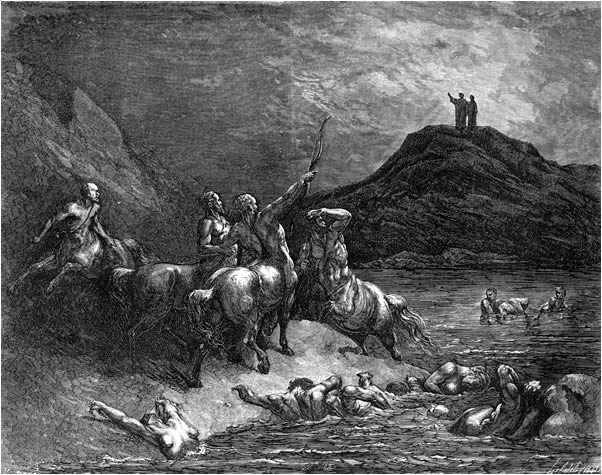
Gimpy Satan
Satan changes a lot over the course his/her/their story. In the Old Testament period he’s a troublemaker, able to move around in the physical world. But in a substantial portion of the Midieval period, from 300 onward to 1300ish, he’s kind of broken, not much of a threat as something that’s been vanquished. There’s lots of examples of this bound and beaten devil, but two that stand out to me would be the thousand-armed satan on a grill in “Tundale’s Vision” and, of course, the monstrous, endlessly gnawing, three headed beastie at the end of Inferno.
Interestingly this gets picked up in Dungeons and Dragons, if you really read in the corners, where Asmodeus is secretly a hologram created by the broken serpent god Ahriman lurking in the sub-basement of the nine hells. There’s some deep dorkery there.
The Gospel of Nicodemus
The Gospel of Nicodemus, AKA the Acts of Pilate, is some year 350ish bible fanfic, source unknown, but probably cobbled together from earlier sources. It’s arguably the biggest source of the Harrowing of Hell narrative, particularly since it was translated into Old English and ultimately into the mystery play tradition. Some versions have a rare gender-swapped Hades character (Seo Hell), who has some fun dialog with Satan and may make it into our upcoming “Women of Hell” series. Translation here.
The first half isn’t much fun from an infernal lore perspective, and mostly serves to feed the flow of medieval antisemitism and the libel myth. An ineffectual Pilate tries to argue himself out of condemning Jesus, but the Jewish leaders won’t have any of it. This goes on for many pages. The second half is more fun, Jesus storms into Hell and takes over the place.
Nicodemus leaves a lasting mark in demonology: Beelzebub becomes the commander of Hell, and this likely elevates him to one of the standard big-name demonic princes, even one of the names of Satan. There really can be multiple satans though, it’s not a proper noun…but his ascendency to chief of Hell in this story may be what gives him the political clout to lead the Order of the Fly. Maybe we’ll talk about him in depth some time. He’s able to gain command over Hell by being really butt-kissy to Jesus, talking about how all innocent he is and how Hell has no claim over him It pays to know what to kiss and when.
Sheol, Etc, and Ahnnihilationism/Conditional Immortality
There are several words for Hell, and they all get translated into “Hell” in a way that is deeply unhelpful. Sheol is “the grave.” Gehenna may be a place where souls are consumed in fire, and later, interpreted as “the flame which never dies” and a place of eternal torment. Tartarus is a place of eternal torment, but mostly for the baddies. There’s also something like the void. This kind of muddle is why it’s hard to have a clear conception of what hell “is…”
I’m looking forward to having a chat with the host(s) of Rethinking Hell, an evangelical Christian podcast about conditional immortality (that is, that no one burns in hell forever…the damned don’t have the same immortality as the saved.) That was my first organized look at the related ideas of annihilationism (all baddies get burned up) and Conditionalism (immortality is reserved for the saved and blessed, however you define them).

Probably Jesus wore studded birkenstocks into Hell. That’s our theory and we’re sticking to it.
81集单集

